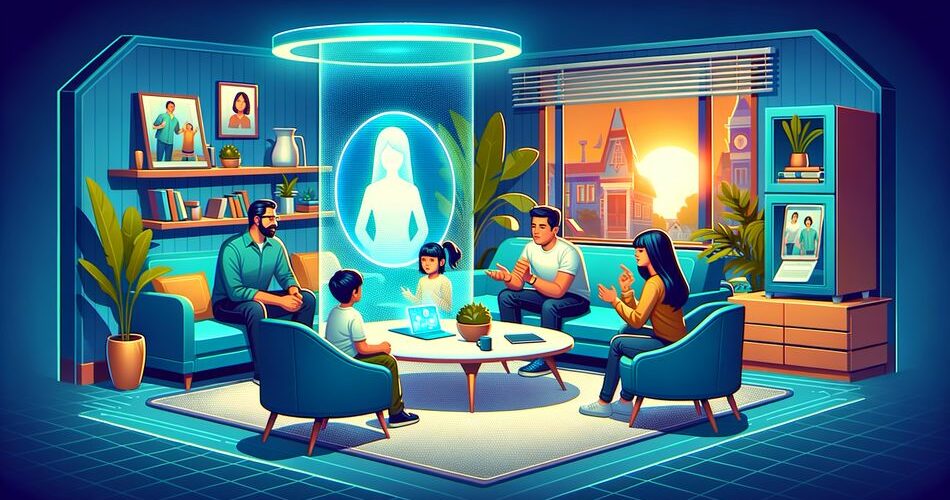In today’s fast-evolving world, technology continuously shapes and reshapes our everyday lives. Among the many innovations making waves, holograms have emerged as a revolutionary tool, particularly when it comes to virtual interactions. Imagine being able to project a life-sized, three-dimensional image of a family member into your living room, making virtual calls more lifelike than ever before. This can be a remarkable leap forward for staying connected with loved ones, especially for families separated by distances. Welcome to the future of family interactions—welcome to holograms in the living room.
The Rise of Holographic Technology
Holographic technology has been around for decades but has only recently become sophisticated and accessible enough for everyday use. Early holograms were basic and often confined to scientific experiments and novelty items. Today, we’re witnessing advanced holograms that are interactive, high-resolution, and even capable of real-time communication.
Companies like Microsoft with its HoloLens and various startups are pushing the boundaries, making the technology more user-friendly and affordable. These advancements open up new avenues for applications, especially in the realm of personal interactions.
Holograms in the Living Room
Imagine your child’s excitement when they can see and interact with grandparents, aunts, uncles, or even parents who are far away, as if they were right there in the room. Holographic calls offer a more intimate and engaging experience compared to traditional video calls. These three-dimensional projections allow for better eye contact, the ability to see body language, and real-time reactions that standard video chats lack.
For families where one or both parents travel frequently for work, holograms can help maintain a sense of normalcy for children. It makes the separation less daunting and helps keep the emotional bond strong and vibrant. This can be particularly beneficial during key developmental stages when seeing and interacting with parents is crucial for a child’s emotional and social growth.
Impact on Child Development
The implications of having holograms in your living room can extend beyond merely staying connected. Studies show that children benefit significantly from visual and interactive stimuli. Holograms can bring a touch of reality into virtual interactions, making learning and play more dynamic. Imagine a holographic tutor assisting your child with homework or a beloved storybook character coming to life to narrate a bedtime story.
Not only can holograms enhance everyday interactions, but they can also provide educational and developmental benefits. Picture a history lesson where a child can converse with a lifelike projection of a historical figure or a science class where they can take a virtual tour of the solar system—all from the comfort of their living room.
Challenges and Considerations
As with any new technology, there are challenges and considerations to keep in mind. Privacy concerns are paramount; families must ensure that their holographic interactions are secure and that sensitive information is protected. Additionally, while the technology is becoming more accessible, there is still a cost factor to consider, which might not make it immediately available to everyone.
Parental controls and usage guidelines will also need to be implemented to protect children from potential misuse or overreliance on technology. Maintaining a balanced approach to using holograms will be key to maximizing their benefits while mitigating any downsides.
Looking Ahead
The future holds exciting possibilities for holographic technology in the home. As the technology continues to advance, we can expect even more realistic and immersive experiences. Virtual reality and augmented reality are likely to integrate with holographic technology, offering multi-dimensional interactions that can redefine how we connect with loved ones.
While it may still be in its early stages, the potential for holograms in the living room is immense. For parents looking to support their children’s growth, development, and emotional well-being, this technology can offer a new way to bridge distances and create memorable, enriching interactions.
In conclusion, holograms represent the next frontier in virtual family interactions. They promise to make distant relationships feel closer and offer new dimensions to education and play. As we continue to explore and embrace this technology, holograms in the living room may soon become a staple in our homes, transforming the way we connect, learn, and grow together.

